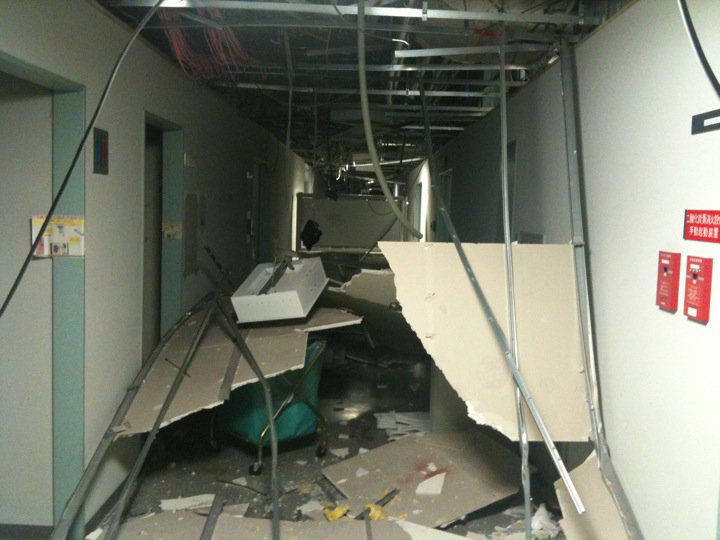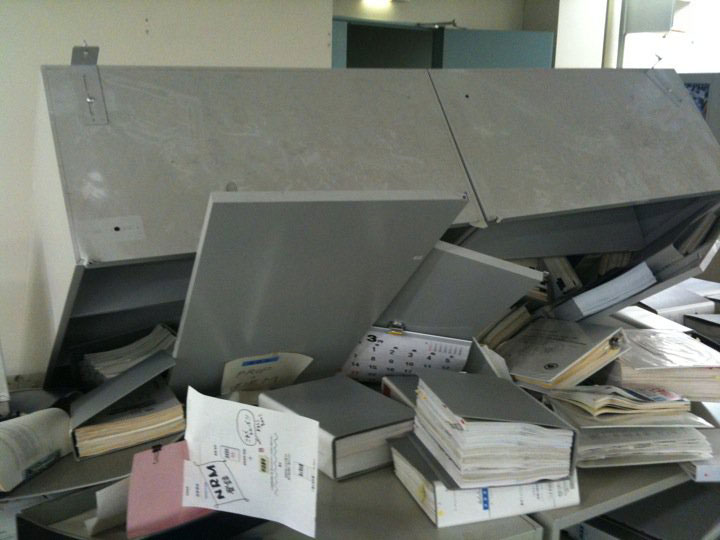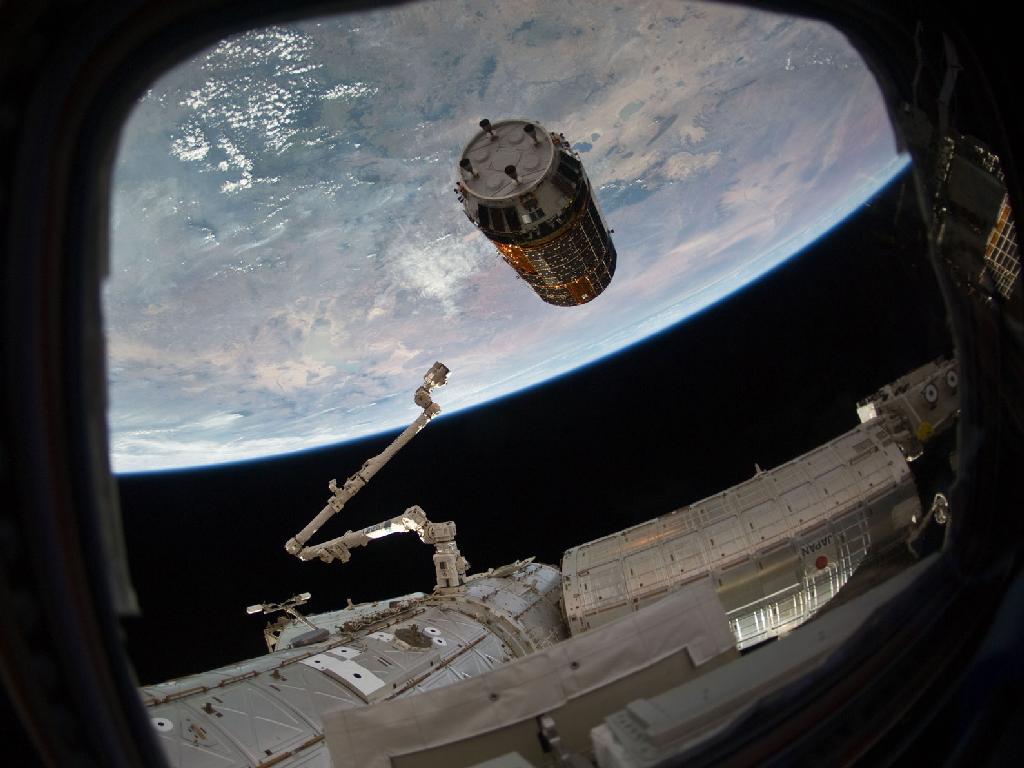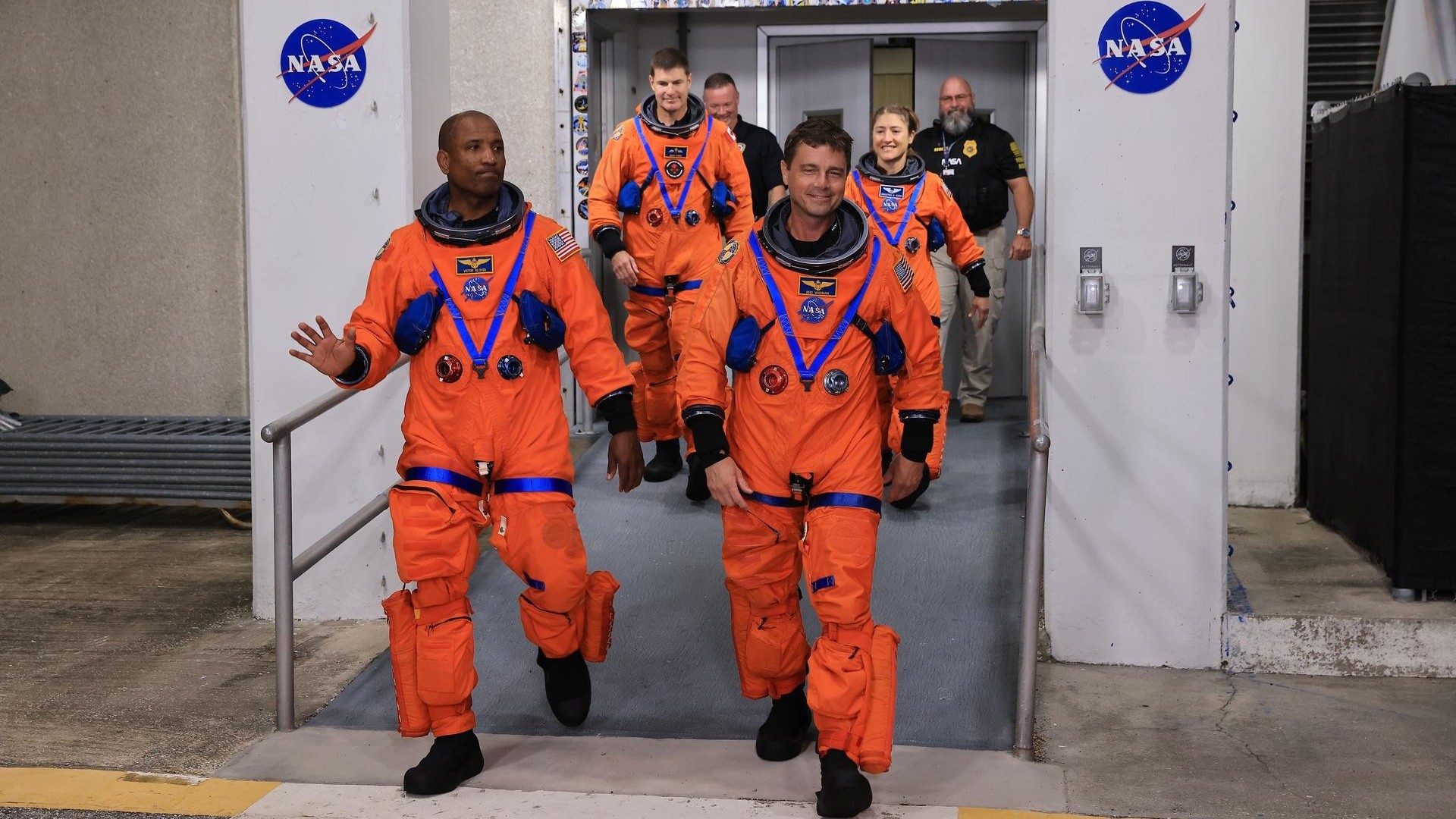Earthquake Forces Closure of Japan's Space Station Control Center

This story was updated at 11:54 p.m. ET.
Japan has shut down its primary space center — including a control room for part of the International Space Station — after the massive earthquake and tsunami that struck the country today (March 11).
JAXA, Japan's space agency, evacuated its Tsukuba Space Center in Tsukuba, Japan, following an 8.9-magnitude earthquake and subsequent tsunami that have devastated the country.
The space center oversees Japan's Kibo laboratory on the space station, as well the JAXA's unmanned cargo ships that deliver supplies to the orbiting lab. Flight controllers with Tsukuba's Space Station Integration and Promotion Center have been sent home for safety, JAXA officials said.
"They will stay with their families and take care of them during the weekend," JAXA spokeswoman Kumiko Sagara told SPACE.com via e-mail from NASA's Johnson Space Center in Houston. "They will come back on Monday and check up on how much the damage is."
The Tsukuba Space Center sustained some damage, according to photos provided to the website collectSPACE.com, a SPACE.com partner site.

Space station crew alerted
Breaking space news, the latest updates on rocket launches, skywatching events and more!
Earlier today, flight controllers at NASA's Mission Control center in Houston radioed news of the earthquake in Japan to the six astronauts living aboard the International Space Station. The station is currently home to two American astronauts, an Italian astronaut and four Russian cosmonauts.
"How bad is the situation there?" asked space station commander Scott Kelly after hearing the news.
"We're hearing that they're having some power outages, and that there has been some damage in the Tsukuba area, but we really don't have a lot of details at this point," Mission Control replied. [Video: Japan Tsunami Travel Times]
No NASA astronauts or crew members assigned to an upcoming station mission from other partner nations were scheduled to be in Japan at the time of the earthquake, Mission Control said.
Mission Control also offered to beam a CNN news feed to the space station to keep the crew informed of developments in Japan.
To date, Japan has trained eight astronauts to fly in space, with three more in preparation.
Photos of the Tsukuba Space Center show damage from collapsed roofs, fallen cabinets and other debris.
A small team of JAXA flight controllers was visiting NASA's Johnson Space Center at the time of the quake and is available to provide assistance should it be required, NASA spokesman Kelly Humphries told SPACE.com.
NASA flight controllers at the Houston center and at a payload operations center at the Marshall Space Flight Center in Huntsville, Ala., are overseeing the station's Japanese systems, Humphries said.
The International Space Station has experienced Mission Control shutdowns in the past. For example, NASA's Mission Control room has experienced partial closings or set up remote, off-site operations when hurricanes have forced center closings in Houston, Humphries said.

Japan's space station role
The $100 billion International Space Station is being built by five different space agencies representing 15 different countries. In addition to Japan's JAXA and NASA, the space agencies of Europe, Russia and Canada are major contributors to the station, which is nearing completion after 11 years.
Japan's Kibo laboratory is a massive space module that is currently the space station's largest single laboratory. The name Kibo means "Hope" in Japanese.
It actually consists of two different rooms: a large, bus-size main laboratory and a smaller rooftop module that serves as a storage room. The Kibo laboratory also has two windows and a small airlock that allow astronauts to pass experiments to an exterior porch-like platform using a robotic arm.
Japan also provides robotic cargo ships that ferry tons of supplies to the International Space Station. The second of these unmanned space freighters, called the H-2 Transfer Vehicles (HTVs), is currently docked at the station.
Yesterday (March 10), the station's crew moved the HTV-2 cargo ship from a rooftop docking port to an Earth-facing port on the bottom of the station. The astronauts were scheduled to open the hatch and enter the cargo ship soon after, but mission managers have now delayed that chore until next week when the Tsukuba space center is expected to be back online.
Japan also has a rocket complex used to launch spacecraft and satellites into orbit called the Tanegashima Space Center on the island of Tanegashima in the country's southern region. Sagara said that she has not received any reports of damage at that space center from the earthquake.
Sagara added that the spaceport is relatively far from the earthquake’s main destruction zones. It is also built on top of a cliff, offering protection from any tsunami waves, she added.
You can follow SPACE.com Managing Editor Tariq Malik on Twitter @tariqjmalik.
Join our Space Forums to keep talking space on the latest missions, night sky and more! And if you have a news tip, correction or comment, let us know at: community@space.com.

Tariq is the award-winning Editor-in-Chief of Space.com and joined the team in 2001. He covers human spaceflight, as well as skywatching and entertainment. He became Space.com's Editor-in-Chief in 2019. Before joining Space.com, Tariq was a staff reporter for The Los Angeles Times covering education and city beats in La Habra, Fullerton and Huntington Beach. He's a recipient of the 2022 Harry Kolcum Award for excellence in space reporting and the 2025 Space Pioneer Award from the National Space Society. He is an Eagle Scout and Space Camp alum with journalism degrees from the USC and NYU. You can find Tariq at Space.com and as the co-host to the This Week In Space podcast on the TWiT network. To see his latest project, you can follow Tariq on Twitter @tariqjmalik.
